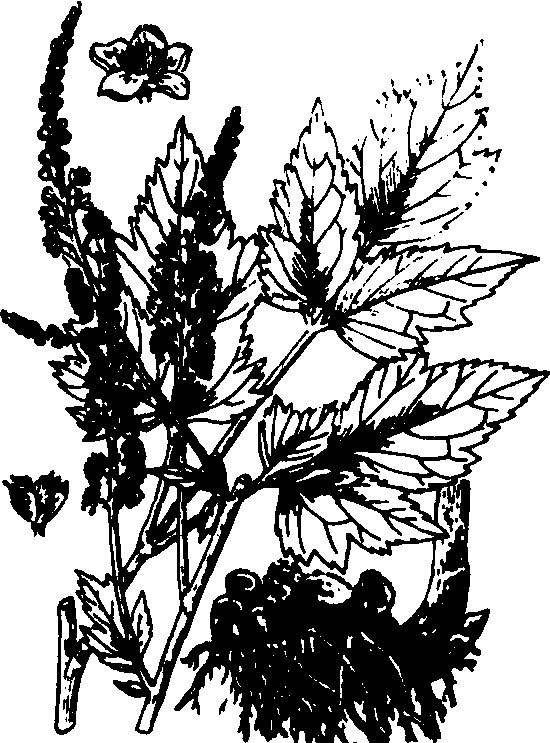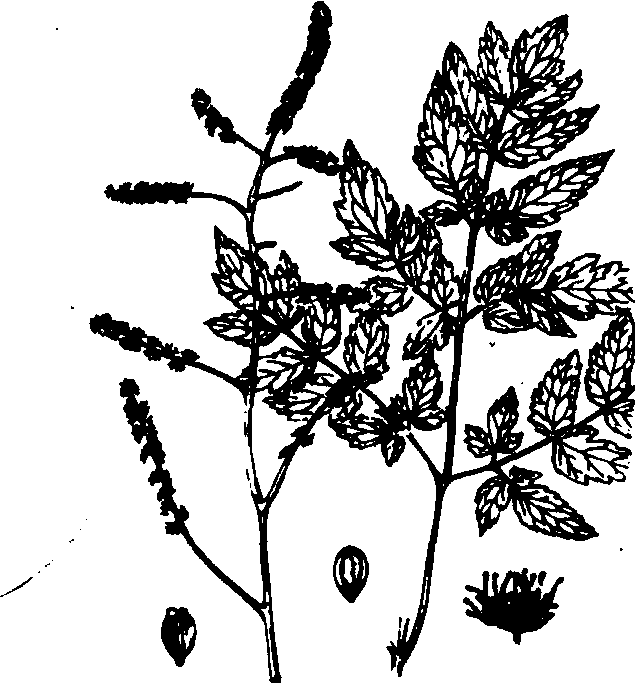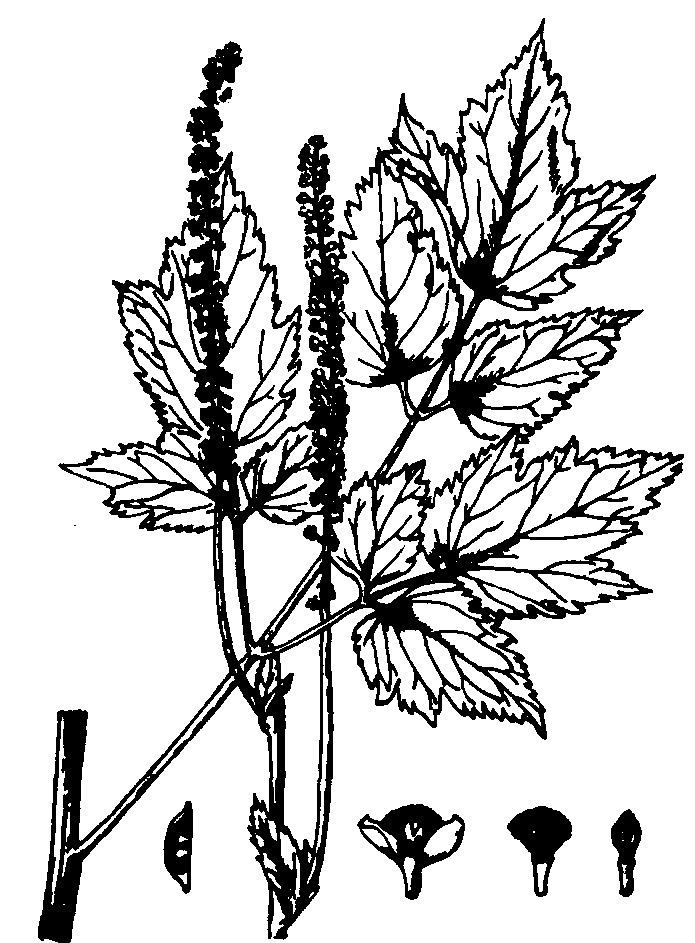升麻rhizoma cimicifugae
辛凉解表药。出《神农本草经》。见《蕃牧纂验方》。又名绿升麻、周升麻。为毛茛科植物升麻Cimicifuga foetida L.、兴安升麻C.dahurica Turcz.Maxim.或大三叶升麻C.heracleifolia Kom.的根茎(图1、2、3)。生用或蜜炙用。主产陕西、四川、辽宁、吉林、黑龙江、河北等地。甘、辛、微苦,凉。入肺、脾、胃经。功能发散风热,解毒透疹,升阳举陷。主治:❶外感风热或风寒郁热,常与柴胡、薄荷、金银花、连翘等配伍。
❷痘疹初起或发而不透,配葛根、芍药、甘草,如升麻葛根汤(《钱乙》)。
❸中气下陷所致久泻不止、脱肛、子宫脱,多与补中、升阳的黄芪、当归、党参、白术、陈皮、柴胡等配伍,如补中益气汤,或与白术、陈皮、当归、川芎、白芷等同用,如升提散(《牛医金鉴》)。牛、马15~45克;猪、羊6~12克。为末或煎汤灌服。痰多喘咳及火旺者忌用。痘疹已现,宜慎用。根茎含升麻碱(cimicifugine)、阿魏酸、水杨酸、异阿魏酸等。兴安升麻根茎含升麻环氧醇(cimigenol)及其木糖甙(cimigenoside)、兴安升麻醇(dahurinol)、齿阿米素(visnagin)、齿阿米醇(visamminol)、异阿魏酸、阿魏酸等。大三叶升麻根茎含生物碱。升麻碱能使皮肤充血,内服则引起胃肠炎,水提取液有镇静作用,注射于动物有降压、抑制心肌、减慢心率的作用;还能抑制离体肠管及妊娠子宫,对膀胱及未孕子宫平滑肌呈兴奋作用。临证上有解热、发汗、止痛作用。体外对结核杆菌及常见的致病性真菌有抑制作用。

图1 兴安升麻

图2 升麻

图3 大三叶升麻
升麻fetid bugbane,skunk bugbane
Cimicifugafoetida L.,毛茛科,升麻属。多年生草本。生于山地林缘或草坡。分布于云南、四川、青海、甘肃、陕西、河南和山西南部等地;俄罗斯也有分布。根状茎粗壮,黑色,密被棕色短柔毛。茎下部叶为2~3回羽状复叶,有长柄,小叶常5~7枚;顶生小叶有长柄,常3裂;侧生小叶较小,有短柄,边缘有不规则锯齿。圆锥花序;花两性;萼片白色,5枚,花瓣状,早落;花瓣小,广椭圆形,1~8枚;雄蕊多数,心皮2~5枚,均离生。聚合蓇葖果。根状茎及根药用,能解热透疹,解毒净血。煎水含漱,治口内炎。又可制农药,用水煮汁喷洒,可杀伤马铃薯块茎蛾。